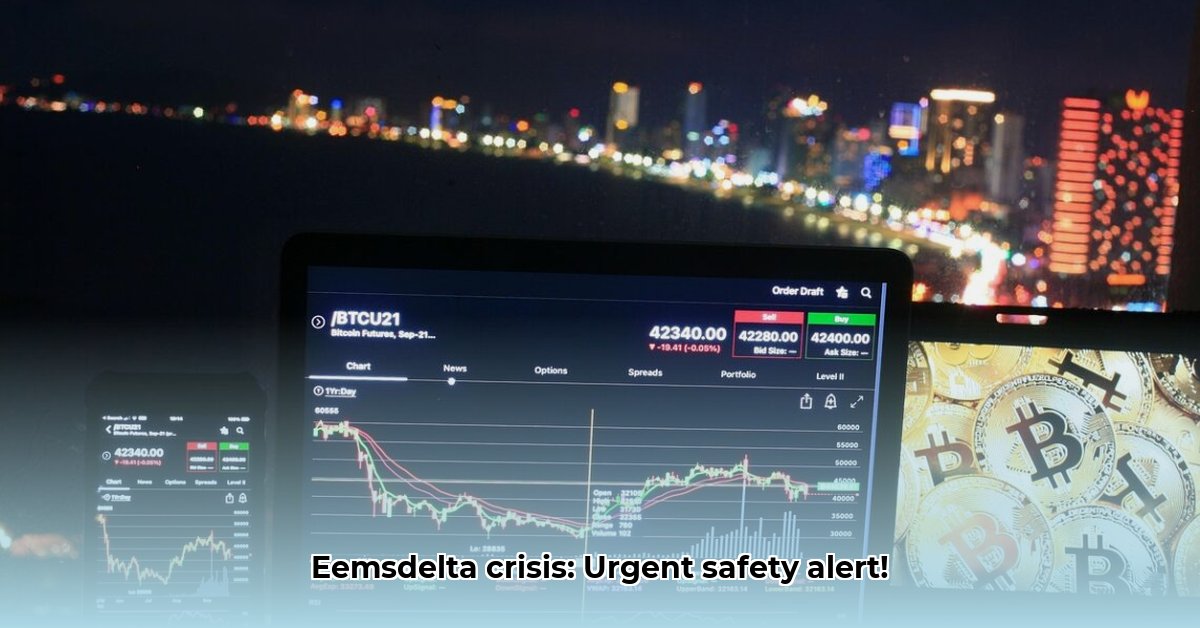
Eemskrant: A Wake-Up Call for Eemsdelta's Safety
Recent reports in the Eemskrant highlight a concerning trend of safety incidents in the Eemsdelta region during June and July. A cluster of events – road accidents, an illegal rave, and the discovery of hazardous waste – reveal significant vulnerabilities requiring immediate attention. This isn't just about individual incidents; it points to a systemic need for improved safety measures across the board.
A Summer of Unfortunate Events on the Roads
The Eemskrant documented numerous road accidents across the Eemsdelta, including incidents on the Bierumerweg, Farmsumerweg, and the N362. One accident tragically resulted in a fatality. This alarming spike necessitates a thorough investigation into potential contributing factors, such as road design flaws, inadequate lighting, or driver behaviour. Is there a pattern emerging? A comprehensive analysis is crucial.
Beyond the Roads: Other Problems Brewing
The safety concerns extend beyond road accidents. An illegal rave near Borgsweer, dealt with by the Mobile Unit (ME), highlighted the potential for large gatherings to escalate into dangerous situations, causing injuries and widespread disruption. Additionally, the discovery of unidentified hazardous waste near Oudeschip poses a serious environmental and public health risk. The exact nature of this waste and the extent of contamination remain unknown, underscoring the urgent need for a proper investigation. What type of hazardous waste are we talking about? The sooner we know, the quicker the appropriate authorities can take action.
Time for Action: A Community Challenge
The Eemskrant’s reporting underscores a collective responsibility. This isn't just a matter for the authorities; it demands a community-wide response. Who is accountable for improving safety in the Eemsdelta? The answer lies in collaborative action.
Steps Towards a Safer Eemsdelta: A Plan of Action
To improve safety in the Eemsdelta, the following steps are crucial:
Road Safety Upgrades: The local government must invest in comprehensive road safety upgrades. This includes: detailed analysis of accident hotspots; improved lighting and road markings; and where necessary, road redesigns. Targeting specific problem areas could significantly reduce accident rates. How many lives could we save with a targeted approach?
Tougher Law Enforcement: Increased police presence and stricter enforcement against illegal activities like the rave and illegal waste dumping are critical. Stronger penalties and community involvement in reporting suspicious activity can enhance deterrence. How can we empower communities to become active participants in enhancing their own safety?
Quick Emergency Response: Improving emergency response times requires better communication between services, enhanced training, and sufficient resources. A faster response can be the difference between life and death. How can we streamline emergency response to ensure faster arrival times?
Community Involvement: Community education programs should promote road safety, responsible waste disposal, and awareness of the dangers of unsupervised gatherings. These programs can foster a sense of shared responsibility for safety enhancements. How can we harness the power of community involvement to address our mutual concerns?
Understanding the Problems: A Risk Assessment
The following table, based on the Eemskrant reports, summarises the risk levels associated with the identified hazards. This remains a preliminary assessment, pending more detailed investigation.
| Hazard Category | Likelihood | Impact | Risk Level | Potential Consequences |
|---|---|---|---|---|
| Road Traffic Accidents | High | Medium to High | High | Injuries, fatalities, property damage, traffic delays |
| Environmental Hazards (Waste) | Medium | High | High | Soil and water contamination, health problems |
| Large-Scale Gatherings (Raves) | Low | High | Medium | Injuries, noise pollution, damage to property |
What the Future Holds: Building a Safer Eemsdelta
The Eemskrant’s reporting serves as a critical wake-up call. The Eemsdelta requires a comprehensive, long-term safety strategy, not just a reactive response to emergencies. This needs collaborative efforts between local government, law enforcement, emergency services, and ultimately, the entire community. We must shift from reacting to incidents to preventing them. The safety of Eemsdelta depends on our collective action.
[1]: [Source URL - Replace with the relevant Eemskrant article URL]